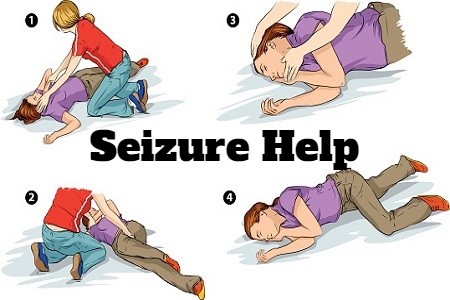~ by Andrew Pacholyk, MS, L.Ac.
Peacefulmind.com
A seizure is a temporary abnormal electrical activity that occurs in a group of brain cells. Often, a recurring, unprovoked seizure is called epilepsy, but some seizures may occur in people who do not have epilepsy. A seizure can manifest as a temporary alteration in mental state, tonic (contraction of short muscle groups), clonic (involuntary contractions due to sudden stretching of larger muscle groups), movements, convulsions, and various other psychic symptoms.
Emergency medicine (action) for a seizure depends on the type of seizure. General seizures may cause the person to fall, which may result in an injury.
A tonic-clonic seizure results in violent movements that cannot and should not be suppressed. The person should never be restrained, or should there be any attempt to put something in the mouth.
Potentially sharp or dangerous objects should also be moved from the area, so that the individual is not hurt.
After the seizure if the person is not fully conscious and alert, they should be placed in the recovery position. The recovery position or semi-prone position is a first aid technique recommended for assisting people who are unconscious, or nearly so, but are still breathing. (See: Recovery Position, below)
It is not always necessary to call an ambulance if the person is known to have epilepsy or if the seizure is shorter than five minutes and is typical for them, if it is not immediately followed by another seizure, and if the person is uninjured. (When in doubt, always call 911).
A seizure longer than five minutes is a medical emergency.
A sudden fall can lead to broken bones and other injuries.
Recovery Position
Before using the Recovery Position, perform the preliminary first aid steps. The initial assessment should be done quickly, in a minute or less.
First assess whether the scene is safe for the rescuer. If not, leave. Assess whether the victim is Alert, Breathing and has Circulation (ABCs). If the victim is alert and an adult, obtain consent before performing first aid. For children, attempt to obtain consent from a parent, guardian, or other responsible caregiver. If the victim is not alert, and is not breathing, check for a pulse. If there is no pulse, perform cardiopulmonary resuscitation. If there is circulation, perform Rescue breathing.
Next, call 911
Rescue Breathing can include:
Mouth to mouth – This involves the rescuer making a seal between their mouth and the patient’s mouth and ‘blowing’, in order to pass air in to the patient’s body
Mouth to nose – In some instances, the rescuer may need or wish to form a seal with the patient’s nose. Typical reasons for this include maxillofacial injuries, performing the procedure in water or the remains of vomit in the mouth
Mouth to mouth and nose – Used on infants (usually up to around 1 year old), as this forms the most effective seal
Mouth to mask – Most organizations recommend the use of some sort of barrier between rescuer and patient to reduce cross infection risk. One popular type is the ‘pocket mask’. This may be able to provide higher tidal volumes than a Bag Valve Mask
-If no spinal or neck injury is indicated:
The correct position is called the “lateral recovery position. Start with the victim lying on the back and with the legs straight out. Kneel on one side of the victim, facing the victim. Move the arm closest to you so it is perpendicular to the body, with the elbow flexed (perpendicular). Move the farthest arm across the body so that the hand is resting across the torso.
Bend the leg farthest from you so the knee is elevated. Reach inside the knee to pull the thigh toward you. Use the other arm to pull the shoulder that is farthest from you. Roll the body toward you. Leave the upper leg in a flexed position to stabilize the body.
-If spinal or neck injuries are possible:
When the injury is apparently the result of an accidental fall, collision or other trauma, the risk of spinal or neck injuries should be assumed. Movement of spinal-injured victims should be minimized. Such victims should only be moved to a recovery position when it is necessary to drain vomit from the airway.
In such case, the correct position is called the “HAINES modified recovery position.” HAINES is an acronym of High Arm IN Endangered Spine. In this modification, one of the patient’s arms is raised above the head (in full abduction) to support the head and neck
First Responder Notes
If an individual has suffered a fall or injuries that suggest damage to the spine, your priority is to keep the airway open. If breathing, then leave them in the position you found them.
If breathing has stopped, regardless of possible injury to the person, perform your standard checks:
DR & ABC (Danger Response Airway Breathing Circulation)
Then move them into the recovery position to open the airway. If they do not start breathing, begin CPR. If they begin to breathe, keep them in that position.
First Responder Priorities.
1 Breathing, everything else comes second.
2 Get Help, you are the stop gap that keeps them alive until they get to the Hospital.




